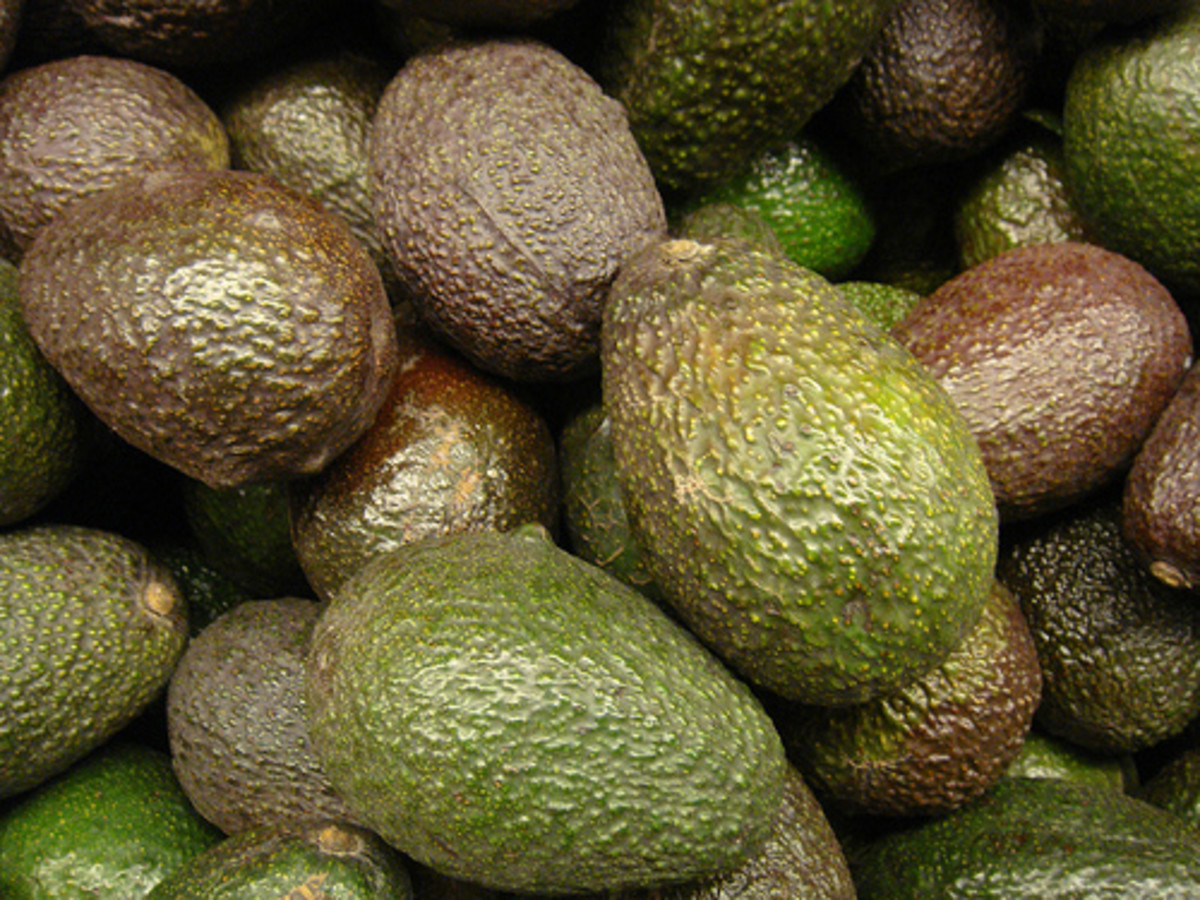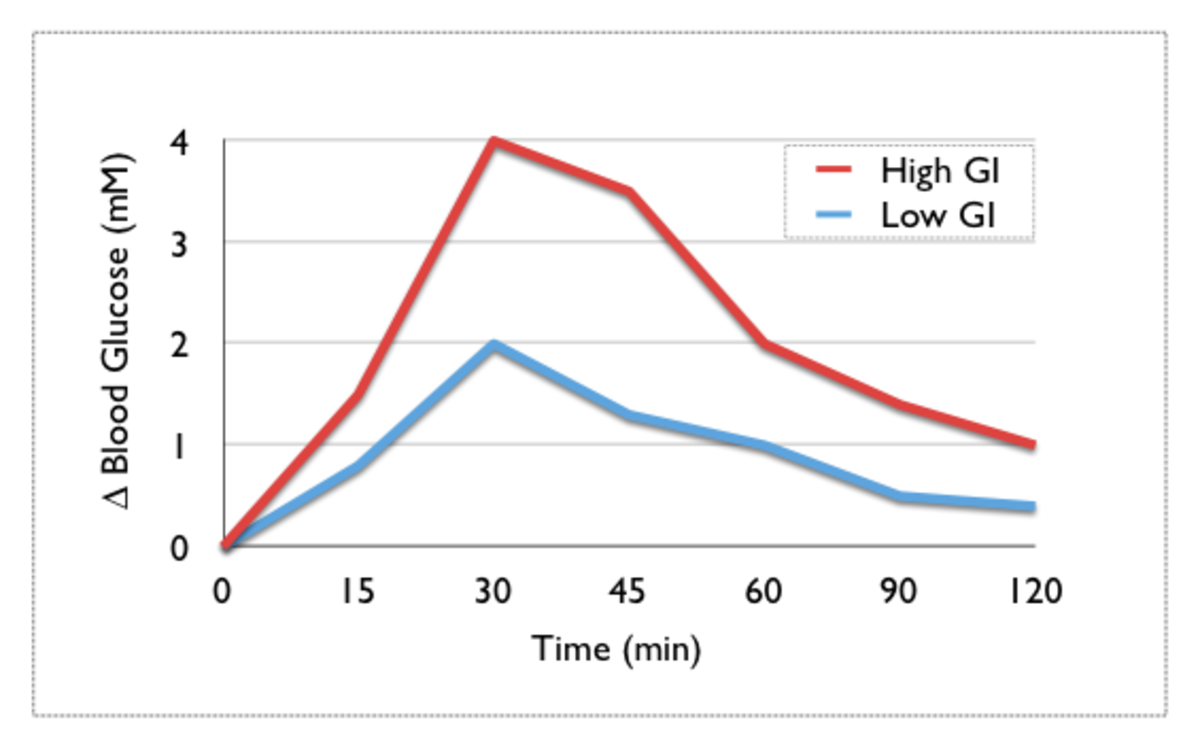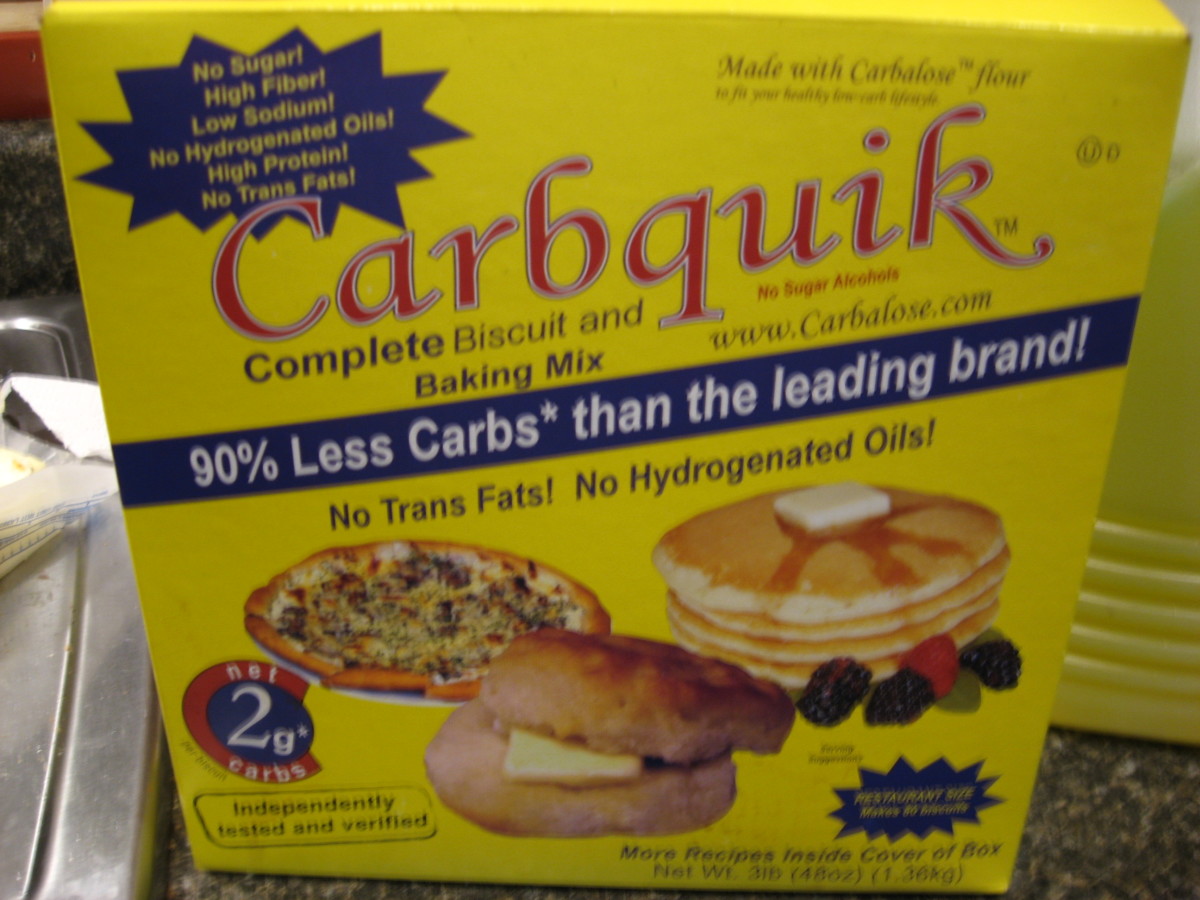Glycemic Index Diet vs. Paleo Diet

I don't like the word Diet. It implies a severe restriction in the foods that we eat, and that is not good. Being restricted in what we can eat, makes us want that food so much more and we usually end up cheating on the diet and eating whatever foods we are not allowed to have.
I prefer to use the phrase Healthy Eating for Life which basically means a complete lifestyle change. This is a total change in how we eat (and live) and it has to be for the rest of our lives for us to become healthy and stay healthy.

Healthy Eating for Life
In the last few years I have come across two "diets" that seem to be quite healthy and could be used by western civilisation. One diet goes all the back to the days of our ancestors, the caveman, a million years ago. The other diet allows us to eat some of the processed foods we have created in our western civilisation, but only in moderation.
For the record, in case you are wondering, I personally have done the western diet (G I Diet) but I have not done the caveman diet (Paleo diet).
Search Amazon on Healthy Eating or Any Specific Diet

The Glycemic Index Diet
Part 1
The GI diet is all about the level of sugar in your blood - or blood sugar level.
The less sugar you eat, the better. All foods are converted from carbohydrates and sugars in our food to energy in our bodies. The more sugar we use up (in the form of exercise), the better and healthier for us. The less sugar we use up, (the less we exercise) the fatter we get because that sugar has to be deposited somewhere - and so it gets deposited in our cells.
Pure sugar is given an index rating of 100 - it is turned into energy in our bodies very very fast. But if that sugar is not used up quickly, it gets deposited in our cells and becomes fat. All other foods have been tested and have a GI index of below 100 - which indicates how fast that food is turned into sugar in our bodies. The higher the index number the faster the conversion. The lower the index number, the slower the conversion rate.
Every time we move our bodies, we use energy. As I type this page, I am using up energy. As I get up and walk around my apartment I am using up energy. If we go out and walk 5 miles or run a marathon, we are using up energy.
It is NOT that we are required to cut sugar completely from our diets - we do NOT need to do that. The human body does need sugar - but we only need very small portions of sugar (unless we are exercising). A lot of our modern and processed foods have extra and added sugar in them, and we are frequently not aware of this fact.
Sugar comes in many forms. We all know about white and brown sugar. But other forms of sugar include raw sugar, high fructose corn syrup (most often found in fizzy drinks) as well as maltrose, dextrose, sucrose and glucose.

The G I Diet
Part 2
The G I diet runs on food lists. It also runs on numbers. Numbers below 55 are low, numbers between 55 and 70 are medium, and numbers between 70 and 100 are high.
In the G I diet - Low is GOOD, Medium is OK and High is BAD.
Rick Gallup invented a new way of looking at the G I Diet by making a traffic light system. Green Lights are Low GI numbers and are therefore GOOD for us. Yellow Lights are Medium GI Numbers and are not good but not bad for us. Red Lights are High G I numbers and are BAD for us.
Under this traffic light system, we are permitted to eat as many green GI foods as we wish to eat. We should eat moderate portions of yellow GI foods. We should eat SMALL portions of Red GI foods.
Search Amazon for the Glycemic Index Diet books
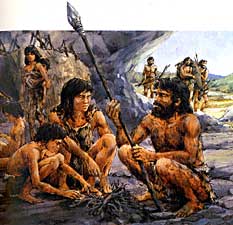
The Paleo Diet
Those foods that were available more than 10,000 years ago, (when the last of the cavemen settled down to become agricultural farmers). are what we should still be eating now.
Our bodies have not yet advanced enough to digest those processed foods that have been introduced into our diets,. This is the main reason WHY humans currently have so many health problems.
Foods that we should still be eating are the basics - meat, fish, fruits, vegetables, nuts, seeds, berries, herbs and spices.
Foods we should NOT be eating include grains, eggs, dairy products, processed foods and sugar (in the form of candy).
The only liquid we need to be drinking is pure WATER.
If you have a lactose intolerance to milk - have you ever wondered why? It's a genetic leftover of our ancestral lives when cows were not domesticated and we never drank cows milk. Our bodies were not designed to drink cows milk.
Being gluten intolerant (or have celiac disease) comes from the same thing. Someone discovered that we could grind wheat to make flour and that flour could be cooked. But this was less than 10,000 years ago and our bodies have not yet evolved to allow us to eat flour products.
The Paleo Diet
This has a music soundtrack. Everything you need to know is written on the screen for you to read. So your sound can be turned right down.
Processed Foods - Depression linked to processed foods
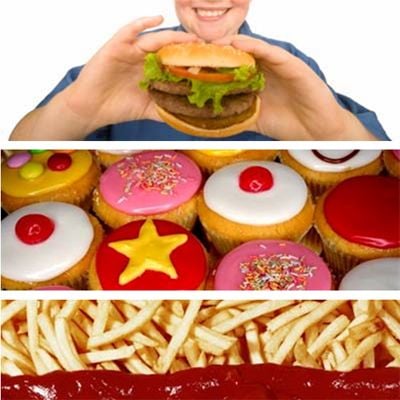
These foods are not good for us. We should be eating far less, or better yet, nothing of these processed foods whatsoever.
The page this picture comes from says that there is a link between people who are depressed and the amount of processed foods they eat.
What about processed foods? - Just how healthy are they?
Processed foods are a big part of the modern western diet. Our bodies are not designed to fully digest them and this is partly why obesity occurs. (The other reason is the lack of exercise) Processed foods include the following -
cheese
pasteurized milk
cookies
candy,
breads, cakes and other flour products
processed meats
fruit juices with added sugar
fizzy drinks
ice cream and other dairy products
fried and battered foods
and so on
G. I. Diet and Paleo Diet resources online
- The G I Diet
Rick Gallup created the G I Diet - Low G I Foods
G I foods are divided into High, Medium and Low related to their sugar levels. You must eat less of the high sugar foods and more of the low sugar foods. - Glycemic Index
The Index of Glycemic Foods based on their sugar levels - developed by the University of Sydney (NSW, Australia)



